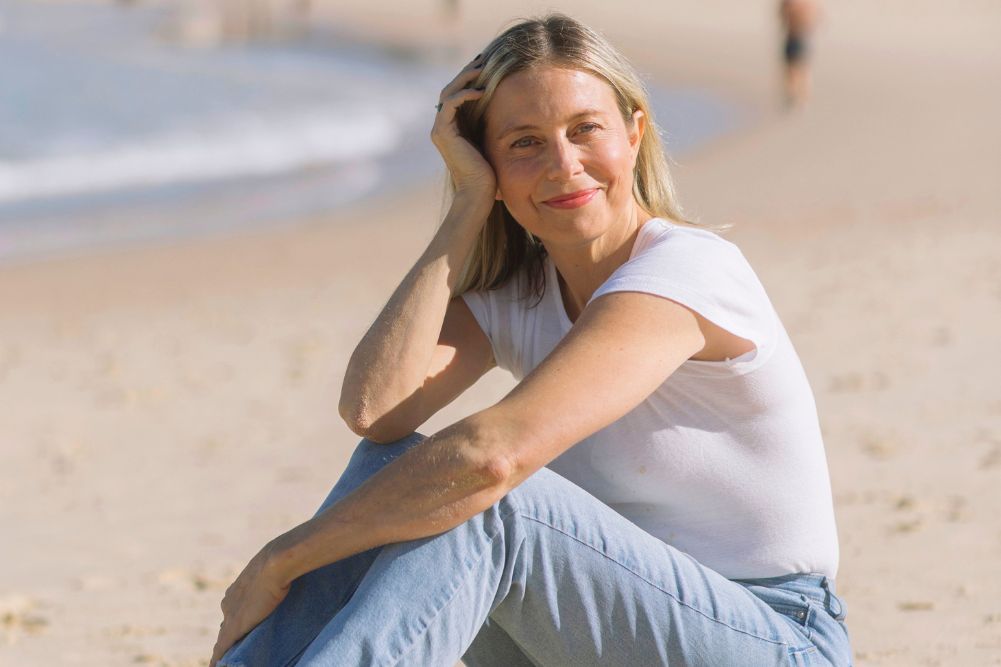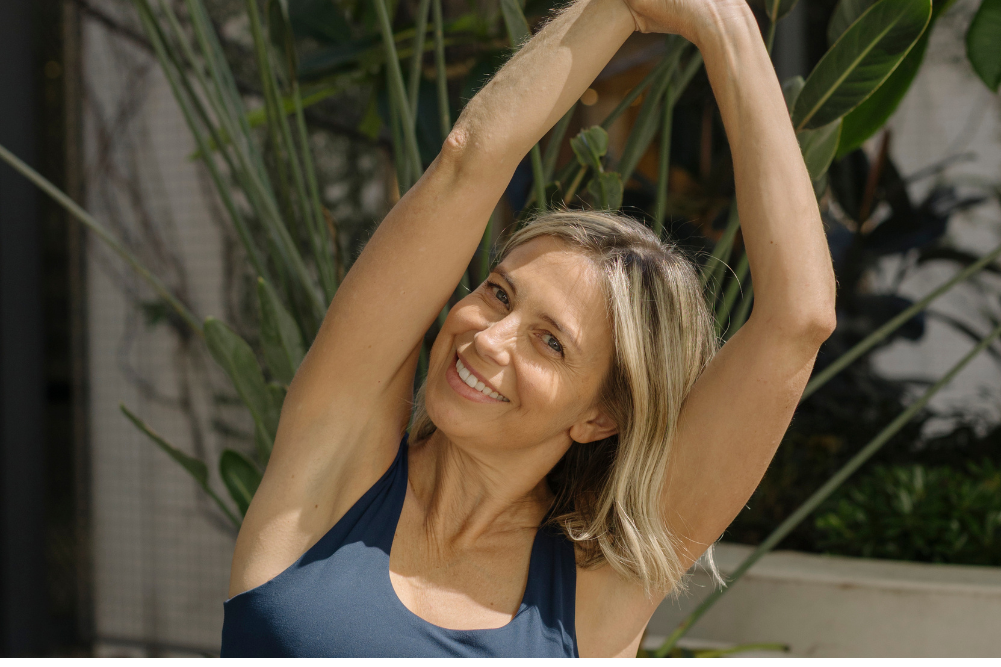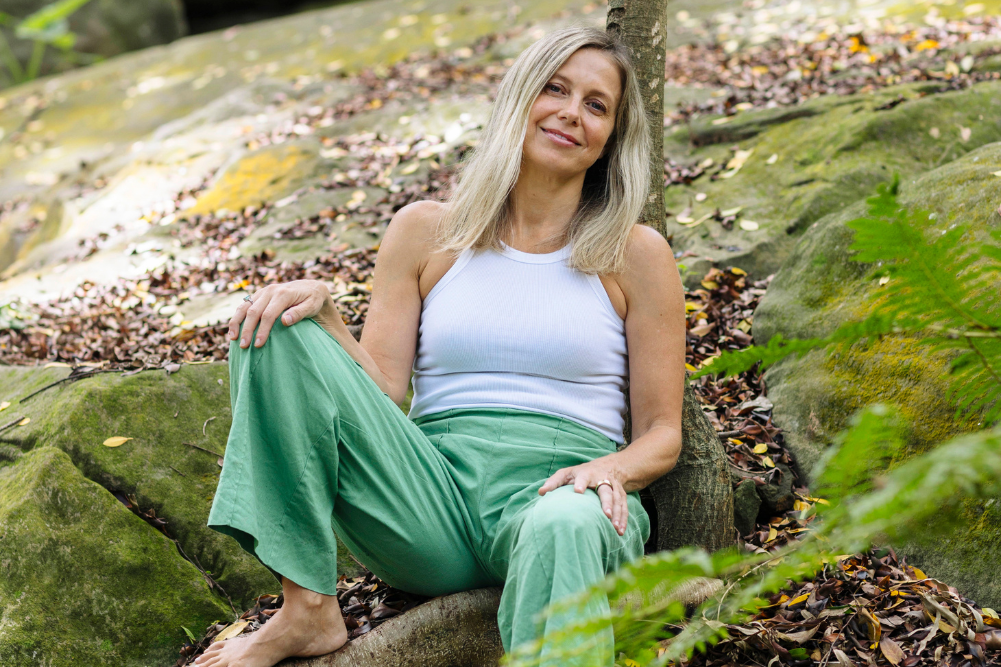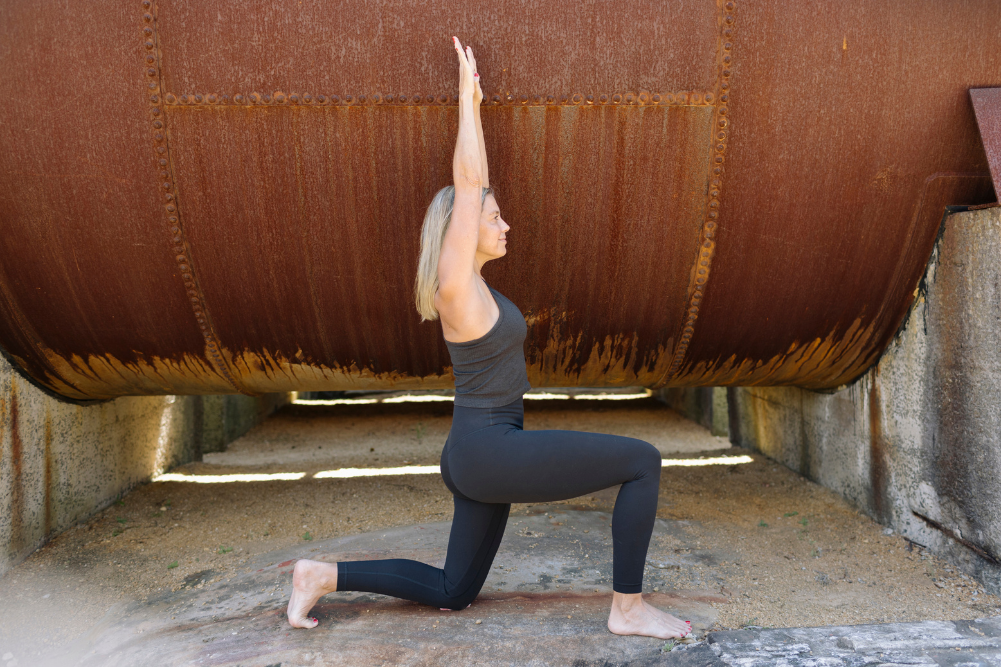Awakening the mind and soul through somatic yoga
Threading somatic principles into yoga offers an embodied, awakening dimension to your practice that is rich in intuitive wisdom.
“In a constant pressure of ‘doing’ we may not allow ourselves to go into these periods of full rest. An agitated and anxious mind will not enable full rest and recovery, so that stress perpetuates stress, instead of creative activity flowing naturally out of quiet rest.” Linda Hartley, Wisdom of the Body Moving
Wouldn’t it be wonderful if we could return to a state of inner, intuitive knowing? A state that is not trained to attend to signals of our body by acting or responding based on what our mind perceives to experience, but rather an embodied sense of vitality and experience that expands into an innate wisdom.
Spoiler alert
In the 1993 film Groundhog Day actor Bill Murray plays the cynical, selfish and arrogant weatherman, Phil Connors, who finds himself reliving the same day over and over again. As much as he tries to break this loop he does not seem to escape the reliving of Groundhog Day. Time after time he wakes up on February 2, knowing the exact course of that day up to the second. The repeating of the loop eventually leads him into despair with binge eating, dangerous activities, a robbery, depression and even suicide; until he connects with his inner feelings, which changes his experience of the world around him thus breaking the loop of Groundhog Day. Even though the story is fiction, this experience of a loop is taking place on a deeper cellular level with our bodies.
False reality
From the outer skin to the deepest core of our inner cells we are constantly exposed to sensations and, with that, trained to respond to signals from the brain. In less than a few seconds our senses pick up thousands of signals through sound, sight, taste, touch and smell. This loop of receiving by the body and responding from the brain is programmed to recognise impulses of sensations that have been experienced before. As you are reading this article, information is surrounding you and giving you signals. In this process, a constant inner subconscious dialogue is processing and assessing. A large part of this feedback is based on a habitual pattern of perceptions, posture and movement interactions between our inner and outer environment. This pattern helps us navigate and respond without really being aware. In a way it creates a false experience of reality.
Our body sends out seven times more information to the brain than the brain back to the body. In order to develop a greater sense of reality and escape the loop we need to increase the awareness of the body’s feeling experience, rather than the cognitive context of it.
Strengthen the relationship
Anything that is too much, too soon or too fast for our nervous system to handle can be considered trauma. If our body does not resolve and recover this properly, the perceived danger from the trauma starts a habitual pattern. Based on the perceived danger, neural pathways send messages to the brain and the body that the danger or threat is not over. The trauma starts to inhabit the body, causing pressure on our cells, nerves and body systems, and leaves a trail of active stresses in the body.
Somatic practices focus on developing embodied knowledge by increasing the body’s interoceptive power. Interoceptive refers to the body’s ability to know what is felt from within and to respond from this knowing.
Prolonged subconscious stresses interrupt, change and damage cells and cause (dis)ease. Unexplainable (systemic) inflammation such as muscle aches, headaches, dizziness or fatigue will literally give a feeling of separation from body and mind. On top of this, nerves and emotions start scratching underneath the skin and cause feelings of restlessness, worry, lack of motivation, sleep difficulty and lower mood. The body and mind just feel overwhelmed, stressed and discombobulated.
Somatic philosophy believes that sensations from past stresses and traumas get trapped within the body-mind loop and, with that, potentially affect body systems, posture, muscular pains and your general outlook towards life. The only way to break this cyclic “fight, flight, freeze or collapse” reaction is by strengthening a mind-body relationship that connects with what is felt from within the body.
Healing empowerment
The original word “somatics” was created by philosophy professor and movement theorist Thomas Hanna in 1976. It is a collective name for the exploration and practices of movement and bodywork that seek to find the truth within the self. Somatics is revolutionary by removing context out of a feeling experience. It allows space for recovery and re-establishes a better body-mind dialogue that is not based on perceptions of truths but rather a truth based on meaningful bodily experiences.
Somatic practices focus on developing embodied knowledge by increasing the body’s interoceptive power. Interoceptive refers to the body’s ability to know what is felt from within and to respond from this knowing. As this awareness expands through somatic practices, a more intelligent and refined “brain-body map” is formed. During this process a greater regulation of inner knowing and feeling occurs that erases and breaks old patterns and loops from stress and trauma. By approaching the body as the vehicle of wisdom, rather than the mind, homeostasis can be restored and provide greater self-regulation.
Eastern wisdom, Western mind-body
The Greek word soma can be translated as “the living body known from within” or “known from the self”. Somatic philosophy understands the body and its processes to be knowable to the self, alone. Practices that come out of this philosophy inherently give agency to the experience.
Somatic practices share a close relationship with yoga and other Eastern mind-body traditions where spiritual awakening occurs within the body.
Somatic practices share a close relationship with yoga and other Eastern mind-body traditions where spiritual awakening occurs within the body. In Tantric traditions the body is the primary ground for learning and knowledge as it provides the practitioner with infinite possibilities to experience and awaken new sensations of consciousness. Threading somatic principles of awareness into a yoga practice can strengthen and offer a new dimension within the process of awakening.
Mindfulness practices teach us to observe our body, sounds, breath, thoughts and emotions as they occur in the moment. Somatic awareness brings in an extra dimension by not only being the observer but also the experiencer. Rather than taking an objective distance through mindful observation, the experiencer is invited to subjectively expand into processing a consciously lived experience of meaningful feelings.
Somatic yoga principles
Somatic practices aim to refine and expand awareness of sensory experience through position and movement of the body. This expands the interoceptive sensitivity of sensations in the tissues of muscles, joints and organs and the experienced relationship inside and outside of the body. In order to support this experienced awareness, the following principles are suggested.
By retreating and resting within the body and the cells, our whole being can reach an essential state of neutral potentiality, simplicity, non-thinking and non-doing. This moment of undoing is essential in the process of creation, growth, space and strength — an ultimate somatic experience.
- Slow-paced movement and extended time for pauses will create space for discovery and add dimension, slow down processes and enhance a greater feeling of sensations.
- Moving from gross to subtler sensations will enhance your sensory experience and support the process of pacing and pausing.
- “Bottom-Up Processing” is a process where the experience is based on how it is coming in and received, rather then what the mind makes of it. It deliberately leaves out cognitive context. The experiencer has to do nothing except feel.
A somatic yoga sequence
This sequence moves from a gross experience of the outer layer of the body into the subtle centre of a cell. Throughout the practice this experience will move slowly from the skin, to muscles and bones, and eventually into the being/resting state of our cells.
By retreating and resting within the body and the cells, our whole being can reach an essential state of neutral potentiality, simplicity, non-thinking and non-doing. This moment of undoing is essential in the process of creation, growth, space and strength — an ultimate somatic experience.
Dynamic cat and cow
Move as slowly as possible so the mind can step into following the complete movement experience of the body, skin, muscles and vertebra joints. Even if you think you move slow, move even slower. Come onto all fours on hands and knees. Arch the back through slow meditative movement of every segment of the spine from the tailbone to the crown of the head. Tilt the pelvis, move the tailbone up, lift the front ribs, heart, collarbones and head. Take as many long breaths as needed and move only on an inhalation. Round the back, starting from the tailbone. Move vertebra by vertebra, segment by segment, and take as much time as needed. By moving too fast, segments will be skipped. Take as many long breaths as needed and move only on an inhalation. Repeat three-five times. Observe and feel the body’s sensations moving.
Child’s pose
Get as comfortable as possible in child’s pose and adjust to your own needs. Move sitting bones back to heels and either stretch the arms overhead on the ground or back besides the body. Adjust if needed by resting the upper body on a bolster. Start to open the senses towards the surrounding space. The distance between the walls, the ceiling, the density of the air in the room, the light coming in, the body touching the ground etc. Sense the contact through hearing, smelling, tasting and feeling. Notice the physical boundary between the body and the room through the skin and the covering of clothes. Feel how the surrounding space is reflecting back within. How is it felt? Not why, just the experience itself of being here while feeling the skin and the surrounding space. Take as much time as needed. Stay for a minimum of five minutes.
Dynamic cobra
Move as slowly as possible to feel into the movement. Lie face down; place the hands underneath and slightly outside the shoulders. Breathe in, slowly and dynamically come up with the head, neck and shoulders; use your back muscles to come up with the chest before using the arms. Breathe out; come down. Repeat five-10 times. Observe and feel the sensations during the movement. Where are they felt? What is felt? Does it change?
Sphinx pose to seal pose
Start by resting the face on the backs of the hands; continue to explore sensations and feelings. Come onto the forearms into sphinx pose, elbows under shoulders. Stay here as the attention moves deeper from the skin and into the muscles of the body. Go into an area where the feeling sensation of the muscles is most prominent. Feel the texture, movements of sensations and embrace the entire embodiment of the experience as a moment for deeper inner connection. If wanted, stay here or lift the elbows up from the ground into seal pose. It is not about stressing the experience but rather pacing to start feeling sensations within the body. Stay for three-five minutes before coming out.
Half stirrup
Lie on the back; bend the right knee and move it towards the chest while holding it with the right hand; the left hand rests on the left thigh or on the floor. Start with gentle slow movements in the hip socket by opening the right leg out, in, up and down. Repeat this several times. Open the knee out to the right side and feel a stimulating stretch in the inner groin. If possible, hold onto the inner right ankle or outer foot and move the foot up into the sky, keeping the ankle in line with the bent knee. Make sure the head and shoulders are comfortably resting on the ground or on a cushion, limiting with that any unnecessary tensions. If needed, use a strap. Hold for three-five minutes while experiencing the deeper feeling sensations within the body. Move from the skin and muscles into the connective tissues within the hip. Dive deep and into the body and experience its feeling responses to the sensations. Let go of the foot and rest on the back and continue to experience the feeling. Repeat on the left side.
Savasana
Rest the body comfortably on the ground and gradually invite yourself to move from the outer layer of the body deeper into the muscles and connective tissue. Feel into the weight of the bones of the body. Notice the density of their outer layer and feel into the sponginess of the bones, with their compact structure and space. Go even deeper into the fluid marrow of the bone and feel the marrow gently rocking. Go into the cells of the entire body and experience how each cell rests within the waters of the body completely calm, still and aware of its existence from within the cell and outside. Get absorbed into this still, pacing of inner intuitive wisdom.
Journal
A great way of expanding your inner knowing is by writing down your experiences as they are felt within the body. Keep a journal and notice over time how the inner dialogue switches and the narrative of experiences changes.








